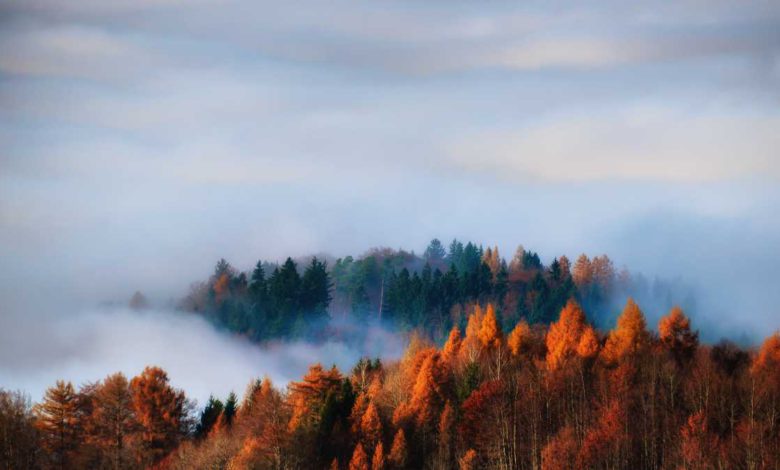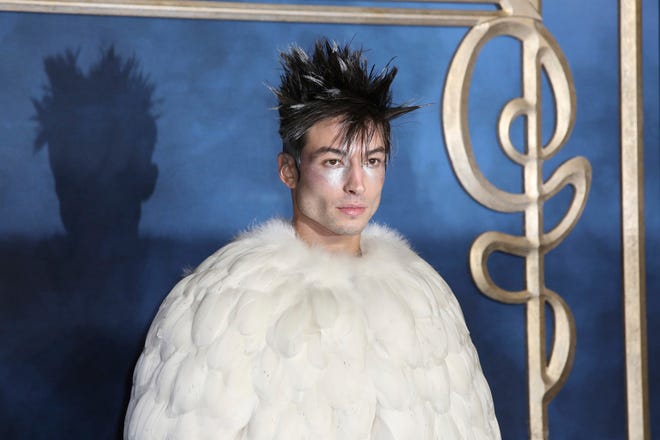

1 of 20
Fall was once called "harvest."
When you think about it, it's kind of strange that fall is the only time of year with two names: spring, summer, and winter each only have one name, while fall is also known as autumn. The season once had a third name as well—in 12th- and 13th-century Middle English, fall was called "haerfest," which was the act of taking in crops. Eventually, it was known as "harvest" because the full moon closest to the autumn equinox is called the harvest moon.
PHOTO: Carol Yepes
2 of 20
The term "fall" came from a phrase.
"Harvest," eventually came to be called "autumn" — so how did "fall" became the dominant term? In the early 1600s, people started moving into cities, and use of the term "harvest" lessened. They started saying "fall of the leaf" to refer to the third season of the year, because the leaves would fall from the trees. Over time, "fall of the leaf" was shortened to "fall," and it stuck.
PHOTO: Matt White
3 of 20
We love pumpkins because of how they make us feel — not how they taste.
Fall is basically synonymous with pumpkins — but have you ever wondered why we're all so obsessed with these gourds? We all spend a lot of money buying them, decorating with them, carving them and eating them ... and apparently, it has nothing to do with the taste. Studies have shown that what we really love about pumpkins is the sense of nostalgia they make us feel. Pumpkins represent farm life and tradition, which is a romantic idea for many Americans, and one we're very attached to. Basically, we love the idea of pumpkins and the imagery surrounding them.
PHOTO: Marcia Straub
4 of 20
Children born in the fall may be more likely to live longer.
Research has shown that people born in the fall are more likely to live to 100 years old, and no, it's not just a coincidence. Studies show that the month you're born in can influence the environment you develop in, both inside the womb and out. That environment can do everything from affecting your behavior to your overall health.
PHOTO: Caiaimage/Tom Merton
5 of 20
Fall colors depend on how much sugar is in the leaves.
Fall leaf colors are caused by certain pigments in the leaves, and different kinds of trees produce different pigments. When you notice leaves that are purple and red, that's caused by the "anthocyanins" pigment, which is only produced in the fall when sugars are trapped in the leaves. Lots of dry weather and sunlight will lead to more sugars in the leaves, meaning the leaves will be brighter red. Freezing, meanwhile, stops the process of making red pigments.
PHOTO: kecl
6 of 20
Leaves don't REALLY change colors.
Here's the deal: All of those colors in a leaf have always been there, it's just that they don't come out until conditions are right. Leaf colors depend on the sun. Leaves are full of chlorophyll, a natural chemical that makes them green. But when the leaves get less sunshine, chlorophyll isn't produced as much, making the green color fade, and allowing the natural color of the leaves to come out. So, really, leaves are naturally red, yellow and orange — the green is just dominant most of the year.
PHOTO: Zhou Jiang
7 of 20
Global warming could ruin fall foliage.
Scientists believe that global warming is going to ruin fall foliage, and may have started already. Leaf colors are highly affected by temperature, light and water supply. If the temperatures remain too warm, that delays the leaves from showing their natural colors.
PHOTO: Quynh Anh Nguyen
8 of 20
Bobbing for apples was once a British courting ritual.
Bobbing for apples has been a popular party game for Halloween celebrations for a long time, but it wasn't always about the spooky holiday. It actually started out as a British courting ritual. Males were assigned an apple, and females would bob for them, trying to get the right apple from the man she wanted. If she did, it meant they were destined to be together.
PHOTO: Elva Etienne
9 of 20
Children born in autumn do better in school.
Research has shown that children who are born in autumn (anywhere between September and December) are more likely to do better in school and reach a "good level of development" than those born at other times of the year.
PHOTO: Rob Buttle / 500px
10 of 20
Leaves fall because of a hormone.
You now know why leaves change color, but do you know why they fall off trees? As their exposure to light decreases in the fall, they start to produce a hormone that boosts the growth of a cell between the stem and the leaf. As that happens, the leaf is basically forced to fall off the stem. Even if this didn't happen, leaves would fall off the trees in the winter as they would freeze and die.
PHOTO: borchee
11 of 20
It's the best time to see the aurora borealis.
If you're looking to get a glimpse of the aurora borealis in the sky, you might want to wait for autumn. The longer nights and cooler weather make fall "aurora season," according to NASA. Geomagnetic storms are about twice as frequent during the fall, creating the light show.
PHOTO: WanRu Chen
12 of 20
Heart attack rates drop in the fall.
The spring equinox that causes us lose an hour is the worst, but gaining an hour during the autumn equinox is actually good for us. According to the New England Journal of Medicine, the rate of heart attacks for Americans is known to fall on the Monday following the end of daylight savings time.
PHOTO: Mekdet
13 of 20
Kids who are born in the fall are more athletic.
Kids who are born in the fall might live longer, do better in school and become more athletic. Researchers at the University of Essex in Great Britain found that kids born in the fall are more athletic. Why is that? Their mother, when pregnant, likely had a lot more exposure to sun, which helped her body produce more vitamin D, which helped give the kids stronger bones.
PHOTO: Mekdet
14 of 20
Pumpkin spice doesn't even really taste like pumpkin.
You might say you love the way pumpkin tastes, but actually you just love the way you think pumpkin tastes. Pumpkin spice doesn't taste like real pumpkin (that generally just tastes like squash). The flavor is a mix of ground cinnamon, nutmeg, dry ginger, and cloves, and has nothing to do with a squash flavor.
PHOTO: Evgeniya Lystsova / EyeEm
15 of 20
The Irish used to carve turnips and potatoes.
Much like Halloween costumes, Jack-o'-lanterns started out as a way for people to scare off evil spirits around Halloween. Back in the day, the Irish carved the faces into turnips, beets or potatoes instead of pumpkins.
PHOTO: Lawrence Lawry
16 of 20
Kids born in fall might be taller.
Here's another interesting fact about kids born in autumn: Studies have found that kids born in late summer and early autumn are slightly taller on average than kids born in the winter and spring. Again, it's probably because their mothers are exposed to more sun and vitamin D while being pregnant during the summer.
PHOTO: Ariel Skelley
17 of 20
You need a lot of apples to make apple cider.
Apple cider is nearly as popular as pumpkin spice during the fall. But keeping up with the demand for fresh cider requires a lot of apples — just one gallon of apple cider requires 36 apples.
PHOTO: Natalia Ganelin
18 of 20
Fall foliage is a major money-maker.
Fall foliage is so beautiful to look at that it's actually its own tourist industry altogether. Searching through the northeastern United States, especially New England states, to see the most beautiful foliage is known as leaf peeping, and it's very popular. Apparently, more than 3.5 million tourists travel to Vermont each year to do some leaf peeping, which inspires a $460 million tourist influx each fall.
PHOTO: Khanh Ngo Photography
19 of 20
Kids born in autumn might be more likely to have asthma.
Kids born in autumn are expected to be taller, more athletic, have longer lifespans and do better in school. But there's one other thing: Studies have found that babies born in the fall are 30% more likely to have asthma compared to babies born at other times.
PHOTO: susan.k.
20 of 20
The earth's distance from the sun has nothing to do with fall.
Autumn is the time when those long summer days start to disappear for a while. But shorter days doesn't mean that the Earth is farther away from the sun—fall is caused by the Earth's tilt in relation to the sun. When the South Pole starts to tip towards the sun, weather cools in the Northern Hemisphere.
PHOTO: Arman Zhenikeyev
Source link








